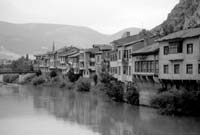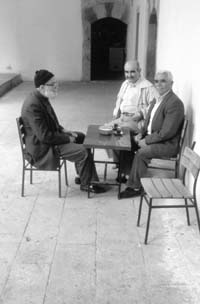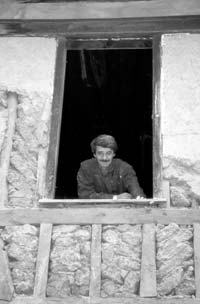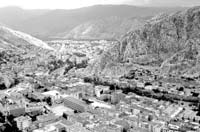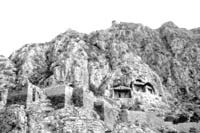Amasya in the Hittite heartland of Turkey
by Ed Kinney
When Moreen and I travel throughout the Middle East, we sometimes wish its intrinsic face wouldn’t change, although we realize this area is dynamic, not static. We can’t deny its people, for our own selfish interests, the advantages we have. The media, especially TV, provides such locals views of our world; hence, they too have dreams for tomorrow.
The city of Amasya, Turkey, demonstrates both, offering visitors an opportunity to see its progress, albeit slow, but also retaining some of its historical image. Blend these with Turks’ overwhelming hospitality to strangers, and travelers will come away with wonderful memories of Amasya.
Tourists likely will be disappointed in Amasya’s industrial area but certainly not its old section, located in a valley with the Yesilirmak (Green) River flowing through its middle. Sheer rock walls on both sides of this narrow valley rise hundreds or so feet nearly perpendicularly.
Hewed into these walls on one side are the tombs of Pontic kings (333 to 44 B.C.), some of which are nearly 40 feet high, easily visible from the valley floor. Three of the tombs can be entered via a not-too-steep hike. At night these sheer-walled tombs often are illuminated.
Past to present
The Amasya area of Turkey became a Hellenized Persian state, reaching its zenith during the reign of its last king, Mithradates VI (115 - 63 B.C.), but his expansive programs later brought him into conflict with Rome, ultimately leading to the end of the Pontic kingdom. The kingdom became a Roman province in the first century, A.D.
Amasya was later captured by Seljuks in 1071, then fell to the Ottomans in 1392. During the Middle Ages this city prospered, rivaling Baghdad before it declined. Fortunately, the city’s architectural heritage survived, though much was damaged by earthquakes, floods and fires during succeeding centuries.
The 1915 fire and the 1935 earthquake severely damaged most of Amasya’s beautiful timbered homes, providing locals the option of building a concrete mass of new construction to meet the needs of Turkey’s exploding population.
Instead, during our walks throughout the old section of Amasya, we observed and heard the sounds of hammers, etc., restoring many of the old homes, especially those with balconies overlooking the Yesilirmak River. Renovations are gradual, but these are proud craftsmen. Though we don’t speak Turkish, a friendly smile got us inside a couple of the damaged homes being renovated.
Late in the afternoon of our second day in Amasya, we slowly walked again with locals throughout the old section of town. The pace was slow, permitting us to again inhale the sights while perusing shops, sampling ice cream, admiring the city’s many monuments (i.e., a statue of Mustafa Kemal Ataturk, founder of modern Turkey) and meditating with the faithful in the city’s beautiful 15th-century Beyazid Camii (mosque).
This handsome mosque, built in 1486, has a wonderful setting among trees on the riverbank. Outside the mosque, in the sun’s fading shadows, three elderly gentlemen treated us each to a glass of steaming-hot Turkish tea with the customary two cubes of sugar. What a great ending to a perfect day in a lovely city!
Some cities may have more fascinating ruins or history, but none we’ve visited in Turkey have a more picturesque setting. Sheer rock walls and the rapidly flowing river embellish its historical and more recent structures. The old section of Amasya retains the essence of its past, not one that has given itself up to 21st-century concrete.
Minutiae
• For information re Turkey, contact the country’s Turkish Government Tourist Office (821 U.N. Plaza, 4th Fl., New York, NY 10017; 877/367-8875 or 212/687-2194, www.tourism turkey.org).
• There are several good webpages with detailed history and photographs of Amasya. Just run a check.
• The Web notes two 3-star hotels in Amasya. However, when visiting there several years ago we stayed in the currently unrated Turban Amasya Hotel overlooking the Yesilirmak River (Turban management has since withdrawn its operation). We found the hotel rooms satisfactory and the cuisine good.
• Though there is no current travel warning for Turkey, readers should always be observant when visiting any of the countries discussed in this column.
Coming up: let’s wander through the city’s suq and watch whirling dervishes in Aleppo, Syria.

